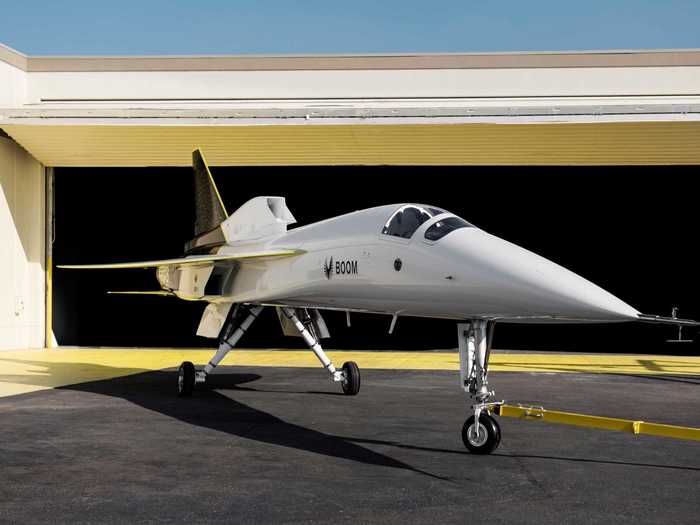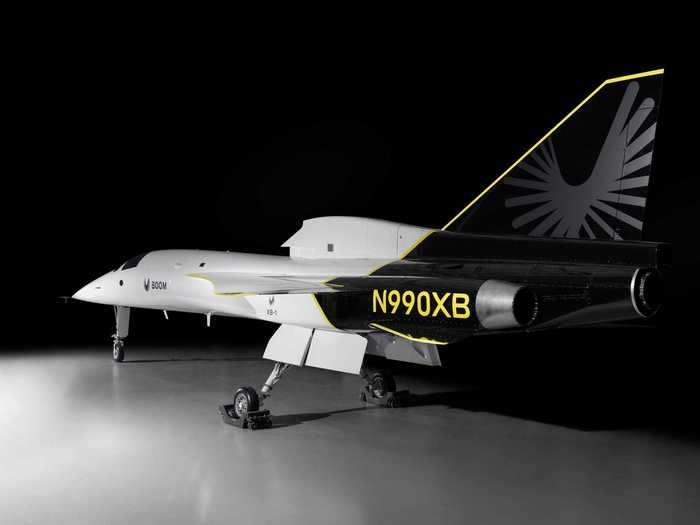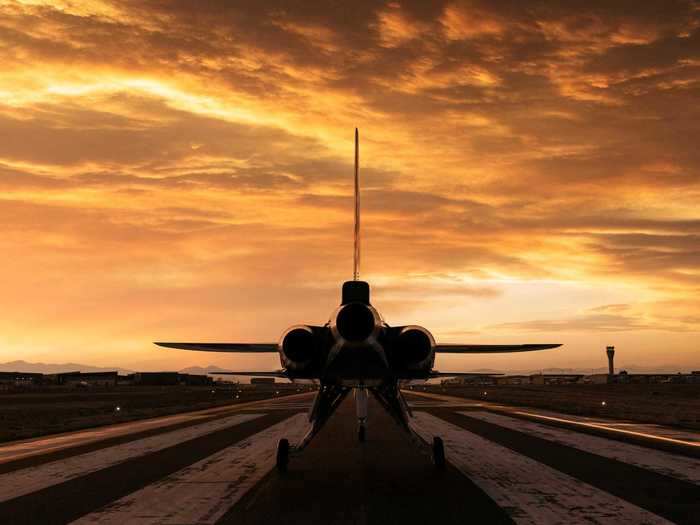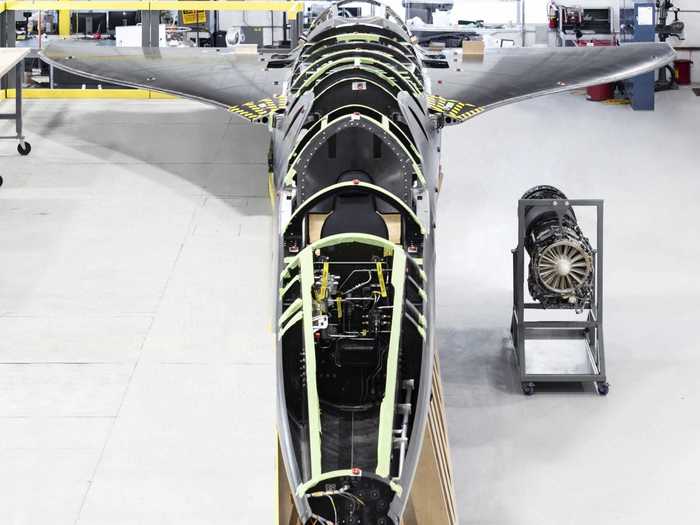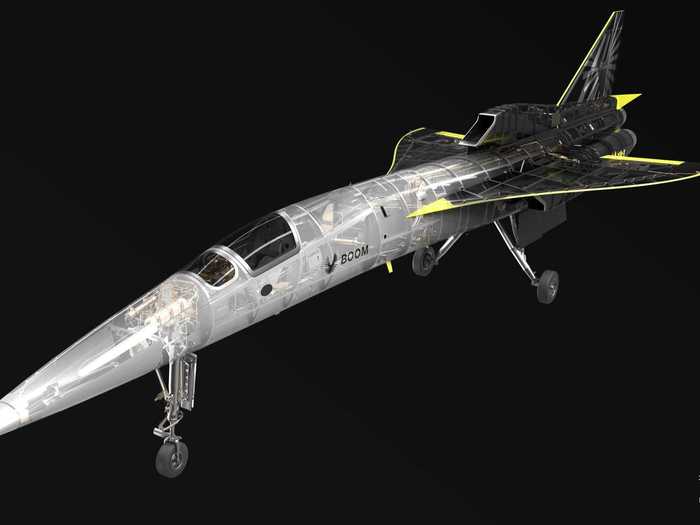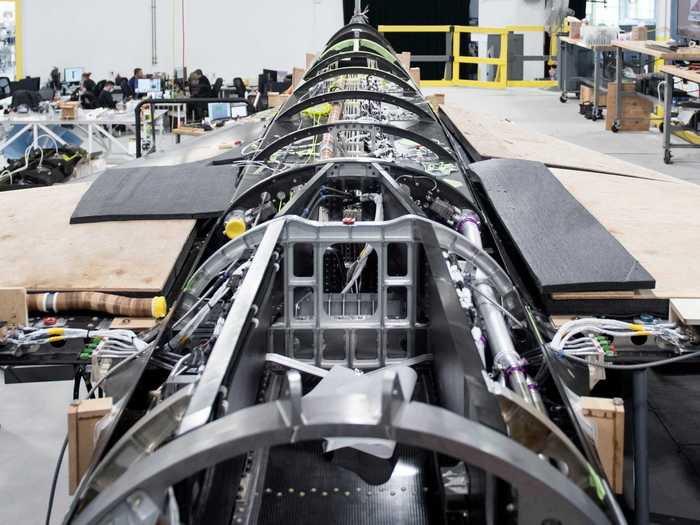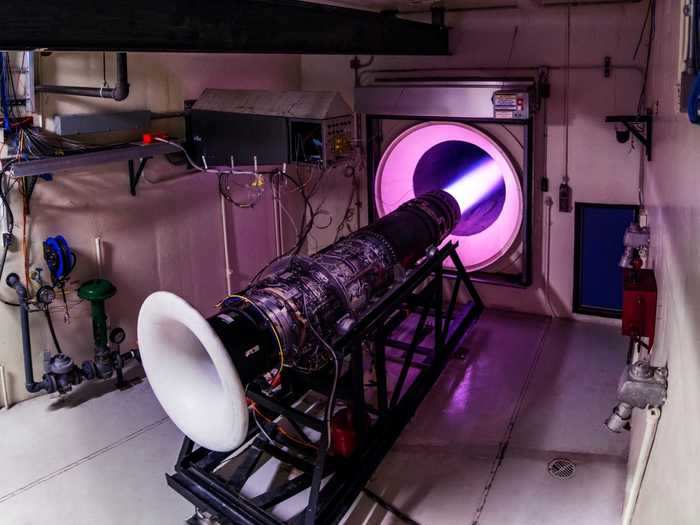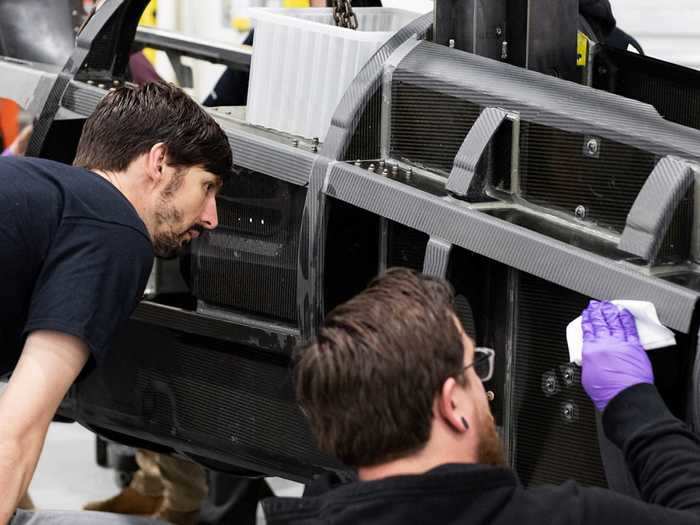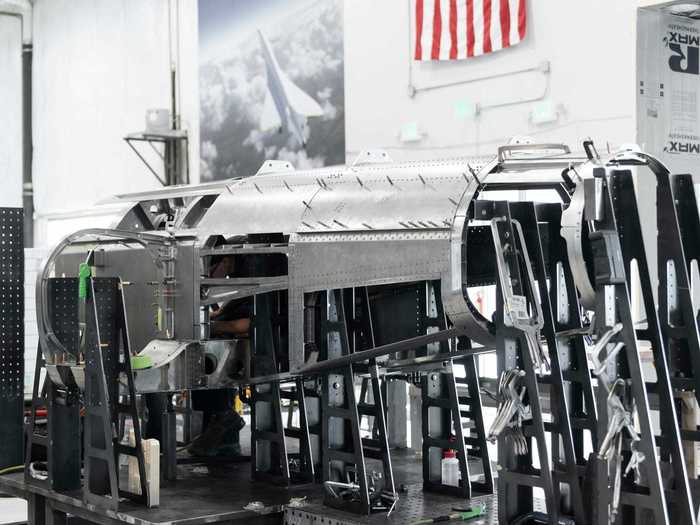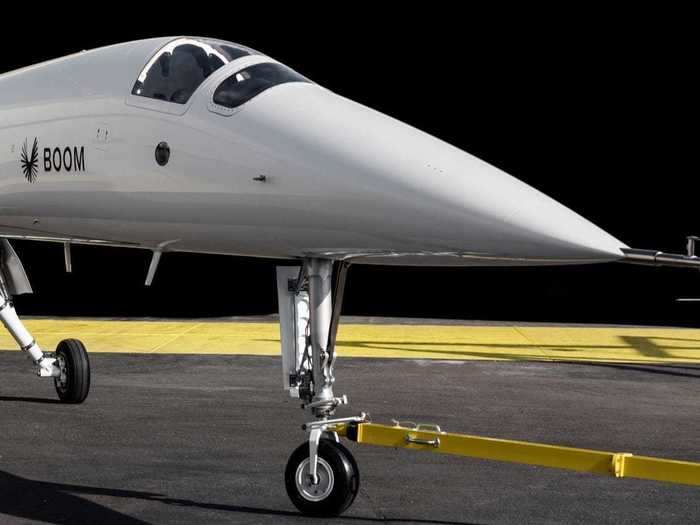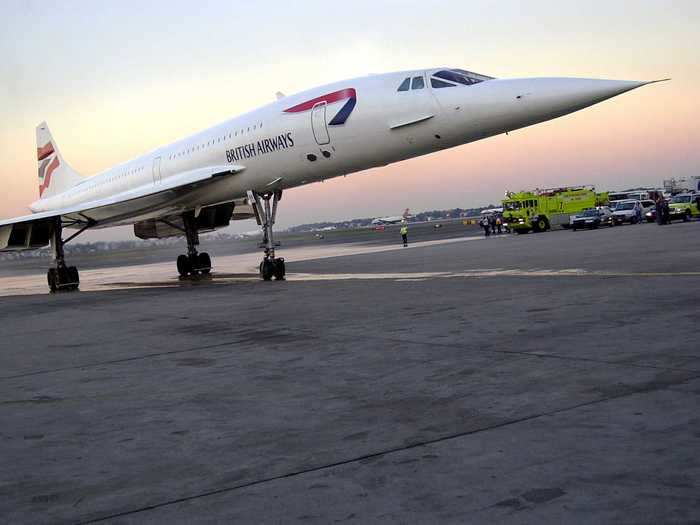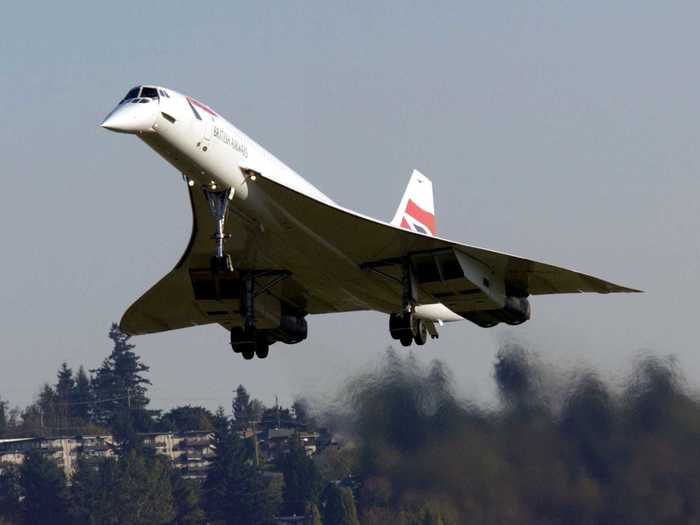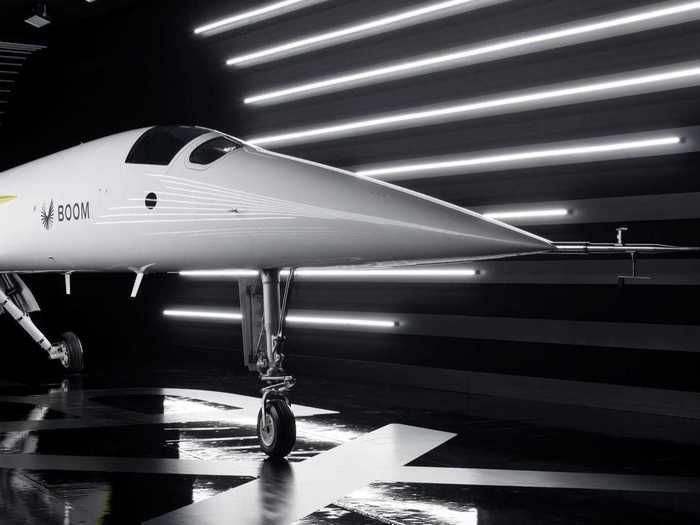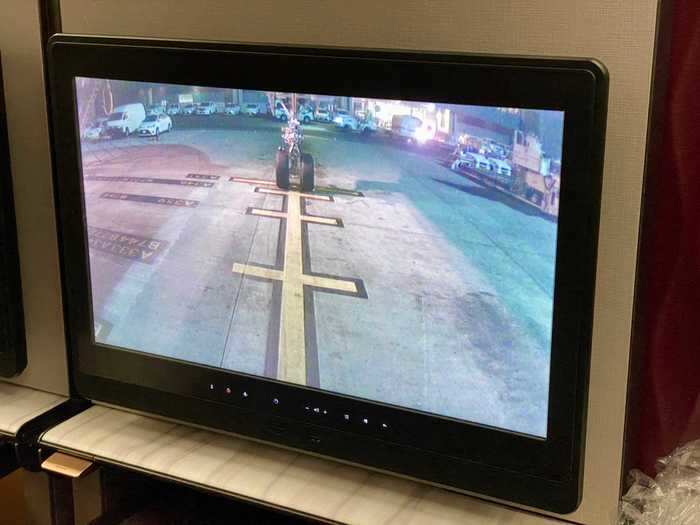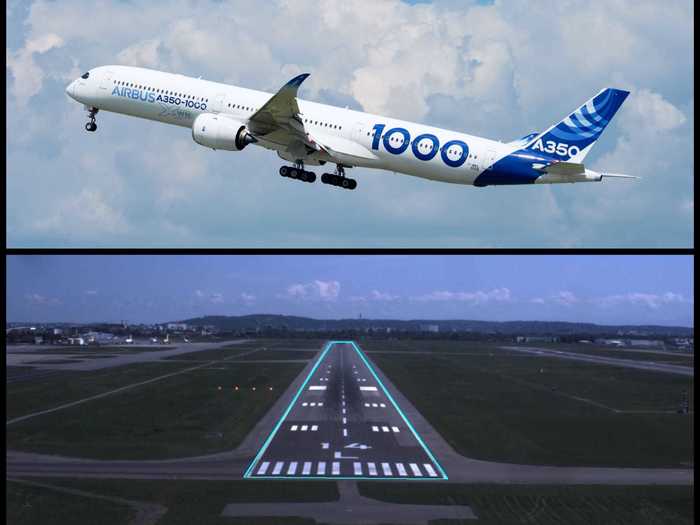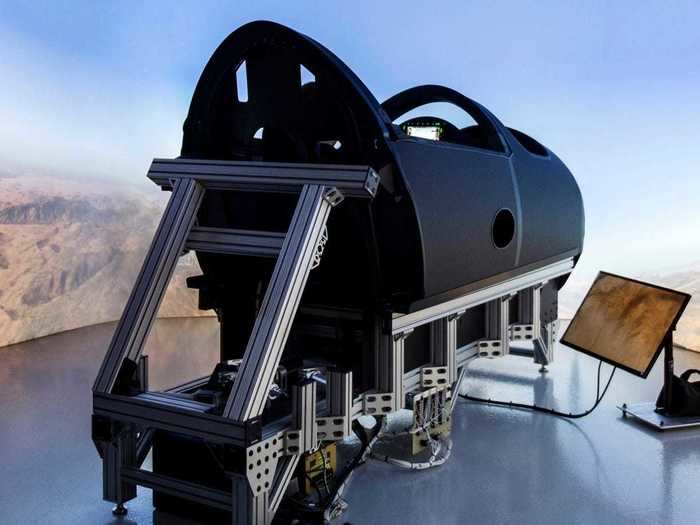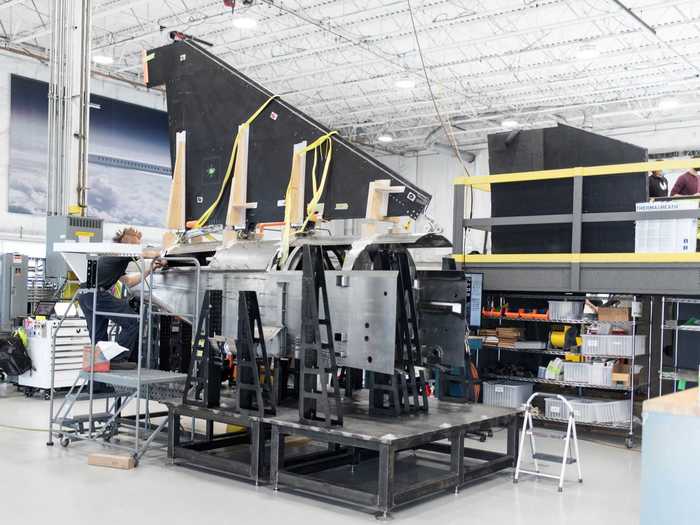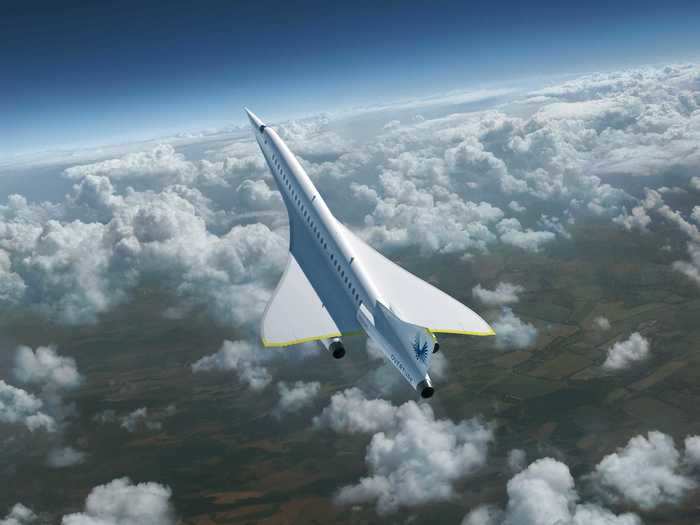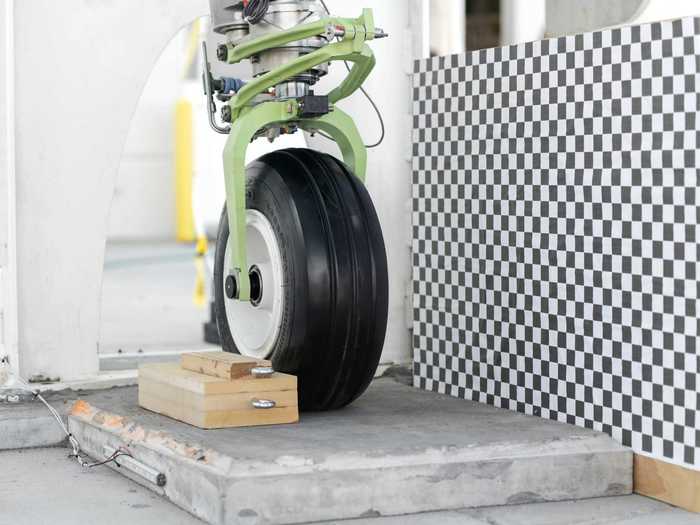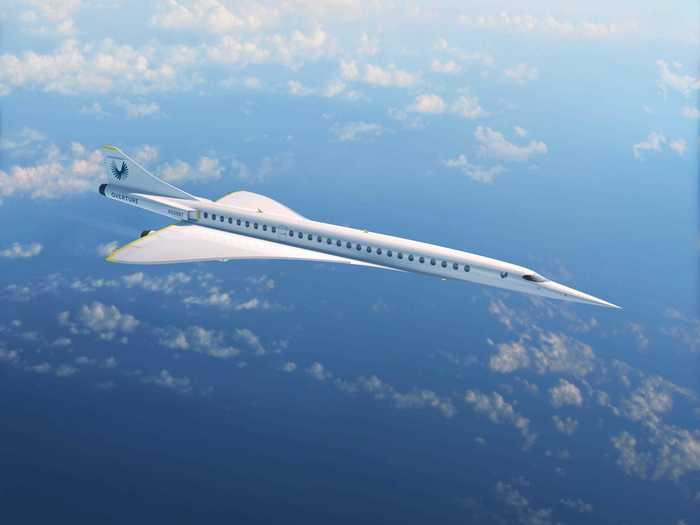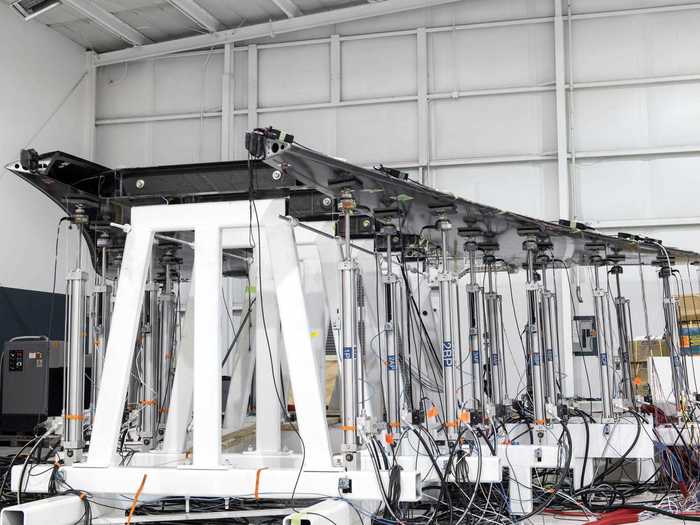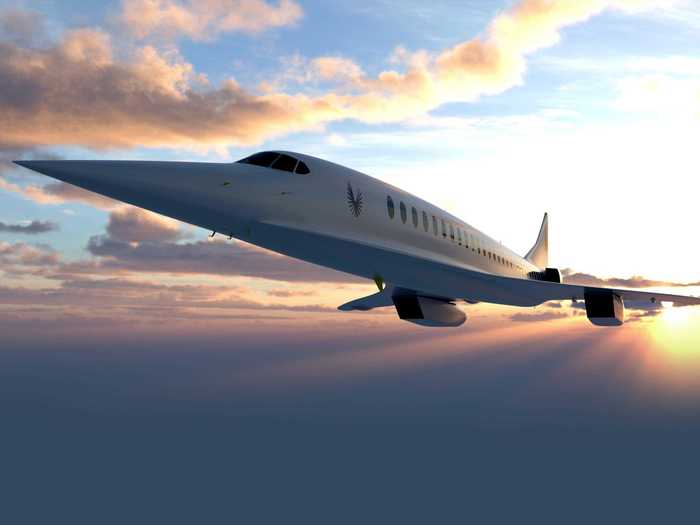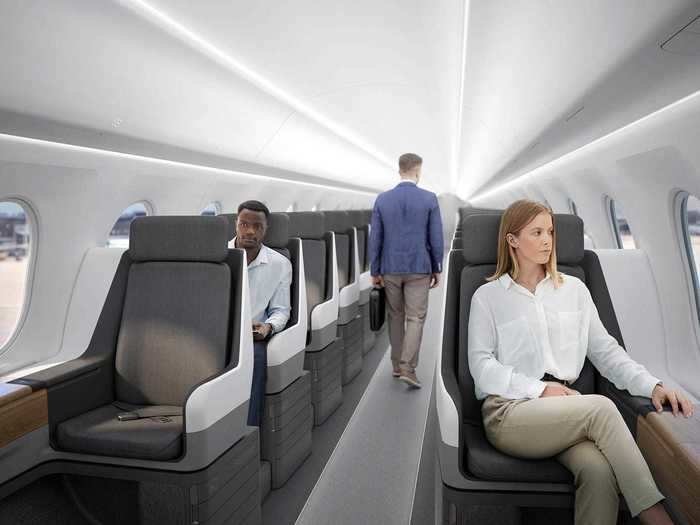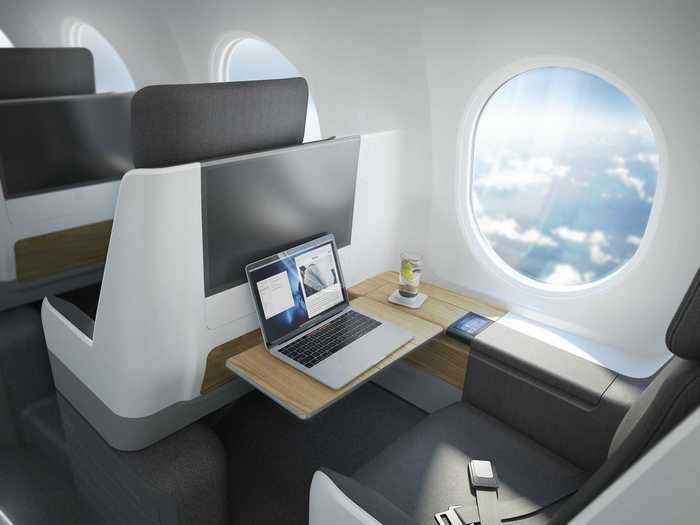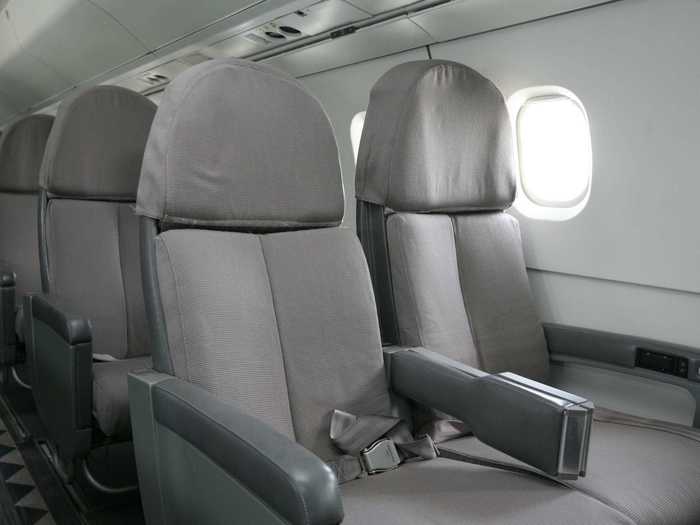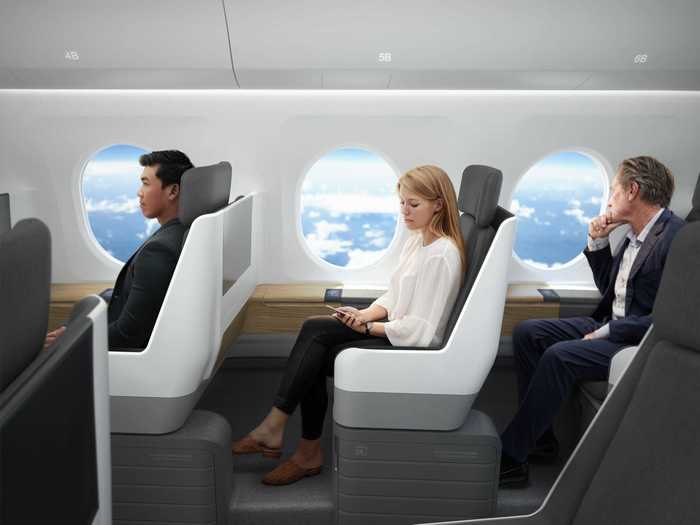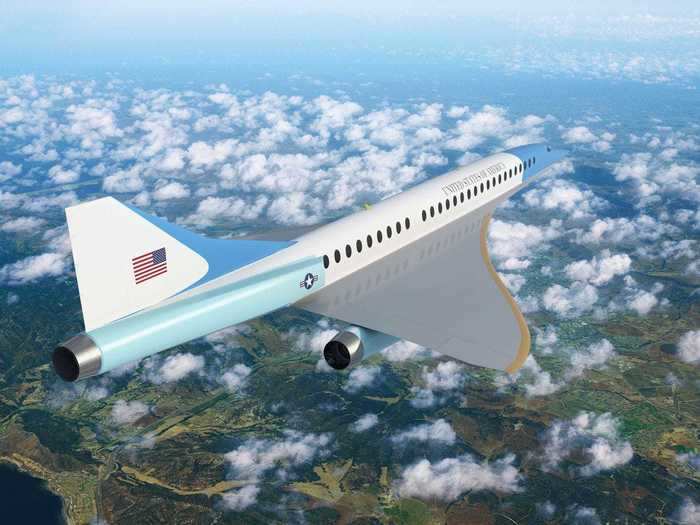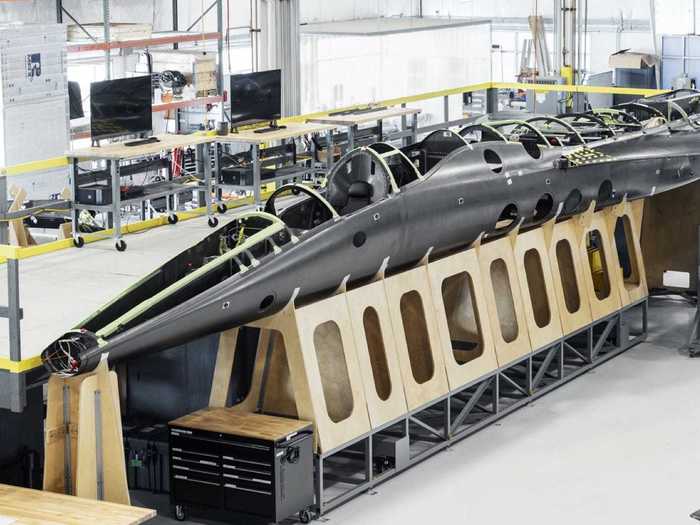Boom Supersonic
- Boom Supersonic just unveiled the prototype for its supersonic commercial jet that's slated to bring a new era of ultra-fast travel.
- The XB-1 demonstrator will begin flight testing in 2021 to prove viable the technology that will power the larger, Concorde-like Overture passenger plane.
- Development of the Overture will continue concurrently with the XB-1's flight testing for a planned 2025 debut.
The days of supersonic travel are almost here again and leading the charge isn't Airbus or Boeing, but smaller startups including one Colorado-based aviation firm that just rolled out a flyable prototype.
Boom Supersonic has been at the forefront for the relaunch of supersonic commercial flight with a design of its own, the Overture, a Concorde-like jet that's slated for a 2025 debut. The $200 million plane could cut down travel times in half if successful and make the world a significantly smaller place.
The Concorde was known for three-hour transatlantic crossing between the East Coast and Europe, making it possible for travelers to have breakfast in New York and lunch in Paris, or breakfast in London and a second breakfast in Washington. But standing in the way between today's planes and the next supersonic age is flight testing — thousands of hours of it.
Boom just took the wraps off of the prototype that will perform flight testing and prove its technology viable for wide-scale commercial flight. The single-pilot demonstrator known as the XB-1 will take to the skies starting next year and pave the way for the Overture.
Airlines have already shown an interest and desire to get back into supersonic travel as Virgin Atlantic Airways and Japan Airlines are both investors in the company that has racked up 30 pre-orders. Even the US Air Force wants to get on board for a potential supersonic Air Force One.
Take a closer look at the Boom XB-1.
The XB-1 just rolled out of Boom's facility in Centennial, Colorado, the result of six years of work since the startup's launch in 2014.
Boom Supersonic's XB-1 demonstrator.
Boom Supersonic
The prototype will lay the foundation for the Boom Overture, conducting flight testing to ensure that Boom's supersonic tech can be transferred into the larger jet.
Boom Supersonic's XB-1 demonstrator.
Boom Supersonic
At 71 feet in length, the XB-1 is around one-third the size of the aircraft for which it will lay the foundation.
Boom Supersonic's XB-1 demonstrator.
Boom Supersonic
Admittedly, its color scheme does bear resemblance to the iconic Breitling Jet Team aircraft.
A Breitling Jet Team L-39 Albatros.
Ryan Fletcher/Shutterstock.com
But the XB-1's speed capabilities, as well as its purpose in advancing aviation toward a new supersonic era, set it light-years apart.
Boom Supersonic's XB-1 demonstrator.
Boom Supersonic
The XB-1 is a far cry from the passenger jet that the Overture will be. This is merely a single-seater prototype but the design is comparable and the knowledge learned flight testing will help get the larger jet off the ground.
Building Boom Supersonic's XB-1 demonstrator.
Boom Supersonic
In the simplest terms, the XB-1 is a rocket with wings and flight controls.
A rendering of Boom Supersonic's XB-1 demonstrator.
Boom Supersonic
Its design is similar to a fighter jet where the plane is built around the engine.
Building Boom Supersonic's XB-1 demonstrator.
Boom Supersonic
In this case, that engine is the General Electric J85, three of which offer the XB-1 12,300 pounds of force.
A General Electric J85 engine.
Boom Supersonic
The fuselage is made from carbon composites, titanium, and aluminum, strong enough to withstand a temperature of over 300 degrees Fahrenheit but light enough to ease its flight through the sound barrier.
Building Boom Supersonic's XB-1 demonstrator.
Boom Supersonic
Supersonic travel can yield temperatures of 260 degrees Fahrenheit, according to Boom.
Building Boom Supersonic's XB-1 demonstrator.
Boom Supersonic
The XB-1's is already showing how new aircraft technology can help solve the problems that plagued the Concorde.
Boom Supersonic's XB-1 demonstrator.
Boom Supersonic
One such issue was visibility since the Concorde's nose was pointed so high. As a result, pilots couldn't see the ground when landing.
A British Airways Concorde supersonic aircraft.
Douglas McFadd/Getty
The low-tech result was an extendable nose that lowered while at low altitude.
A British Airways Concorde supersonic aircraft.
Tim Matsui/Getty
The XB-1 mitigates this problem using cameras in the nose landing gear that can be viewed by the pilot in the cockpit.
Boom Supersonic's XB-1 demonstrator.
Boom Supersonic
Such technology is widespread now on airliners but was unfathomable at the time of the Concorde's first flight.
An onboard camera on a Qatar Airways aircraft.
David Slotnick/Business Insider
Its cameras might even be used to create an autonomous Overture as Airbus is making strides in the field of self-flying planes using software linked to onboard cameras.
Airbus' self-flying A350-1000 XWB.
Airbus
Though the prototype will soon be fully functional, a stationary flight simulator will allow test pilots to train while on the ground.
The XB-1 flight training simulator.
Boom Supersonic
It's designed to mirror the XB-1's characteristics, much like how airline pilots train in simulators every few months.
The XB-1 flight training simulator.
Boom Supersonic
Boom has also committed to a carbon-neutral flight training campaign with the XB-1 as sustainability is one of the company's main tenets. Carbon offsetting and sustainable aviation fuels from Prometheus Fuels will be utilized to achieve that goal.
Building Boom Supersonic's XB-1 demonstrator.
Boom Supersonic
The Overture will also have to ability to use sustainable aviation fuels, which more airlines are adopting as they become available.
A rendering of the Boom Overture.
Boom Supersonic
Ground testing will continue in Colorado and then aerials trials will kick off in 2021 from Mojave, California.
Building Boom Supersonic's XB-1 demonstrator.
Boom Supersonic
The XB-1's testing and the Overture's development will proceed in tandem as Boom continues to finalize the technologies that will be used on the passenger jet.
A rendering of the Boom Overture.
Boom Supersonic
"Boom continues to make progress towards our founding mission—making the world dramatically more accessible," Blake Scholl, Boom founder and CEO, said in a press release. "XB-1 is an important milestone towards the development of our commercial airliner, Overture, making sustainable supersonic flight mainstream and fostering human connection."
Building Boom Supersonic's XB-1 demonstrator.
Boom Supersonic
If all goes to plan, we could be seeing a return to supersonic commercial travel before the decade is over.
A rendering of the Boom Overture.
Boom Supersonic
The Overture will feature a 55-seat passenger cabin arranged in a 1-1 configuration.
A rendering of the Boom Overture.
Boom Supersonic
It's nearly half that of the Concorde but each seat will be comfortable with unobstructed aisle access and oversized windows.
A rendering of the Boom Overture.
Boom Supersonic
The Concorde sat more passengers – around 100 in a 2-2 configuration – but had famously small windows.
A supersonic Concorde aircraft.
AKSARAN/Gamma Rapho/Getty
Boom claims that the aircraft's economics will allow for airfares similar to modern-day business class but airlines will be keenly aware of how much more businesses and the wealthy are willing to pay to save a few hours with quicker flights.
A rendering of the Boom Overture.
Boom Supersonic
Even the US Air Force has taken an interest. Though the next Air Force One is already lined up, Boom may be providing s supersonic upgrade in the near future.
A rendering of the Boom Overture.
Boom Supersonic
And it will have all started in a small aircraft hangar on the outskirts of Denver.
Building Boom Supersonic's XB-1 demonstrator.
Boom Supersonic

